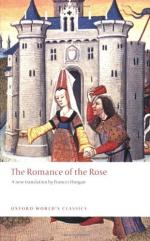|
This section contains 135 words (approx. 1 page at 400 words per page) |

|
Lines 1-20 Summary
The narrator explains that while people often consider dreams to be misleading and false, he argues that dreams can often contain symbolic truth.
Lines 1-20 Analysis
Here the poet explains his principal literary device, which is an allegory presented in the form of a dream. The idea of the figures in dreams symbolizing mental, emotional, or spiritual truths is ancient. It predates Freud's theories of psychoanalysis by many centuries. This idea prepares the reader for the allegory that is to follow.
Using a dream as a mechanism for telling a tale also helps avoid many difficulties that may appear when using allegory. Dreams are known to be unrealistic, so the narrator is able to use fantastic, idealized, and unrealistic elements freely. Dreams that have these elements are "realistic."
(read more from the Lines 1-20 Summary)
|
This section contains 135 words (approx. 1 page at 400 words per page) |

|



